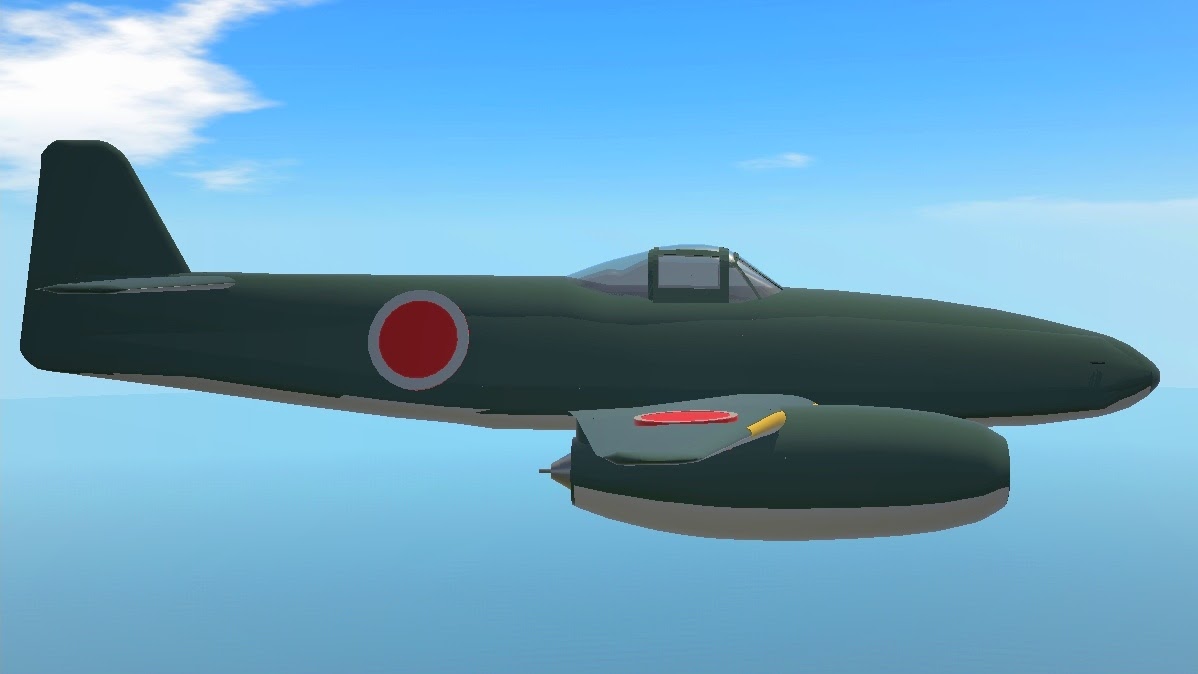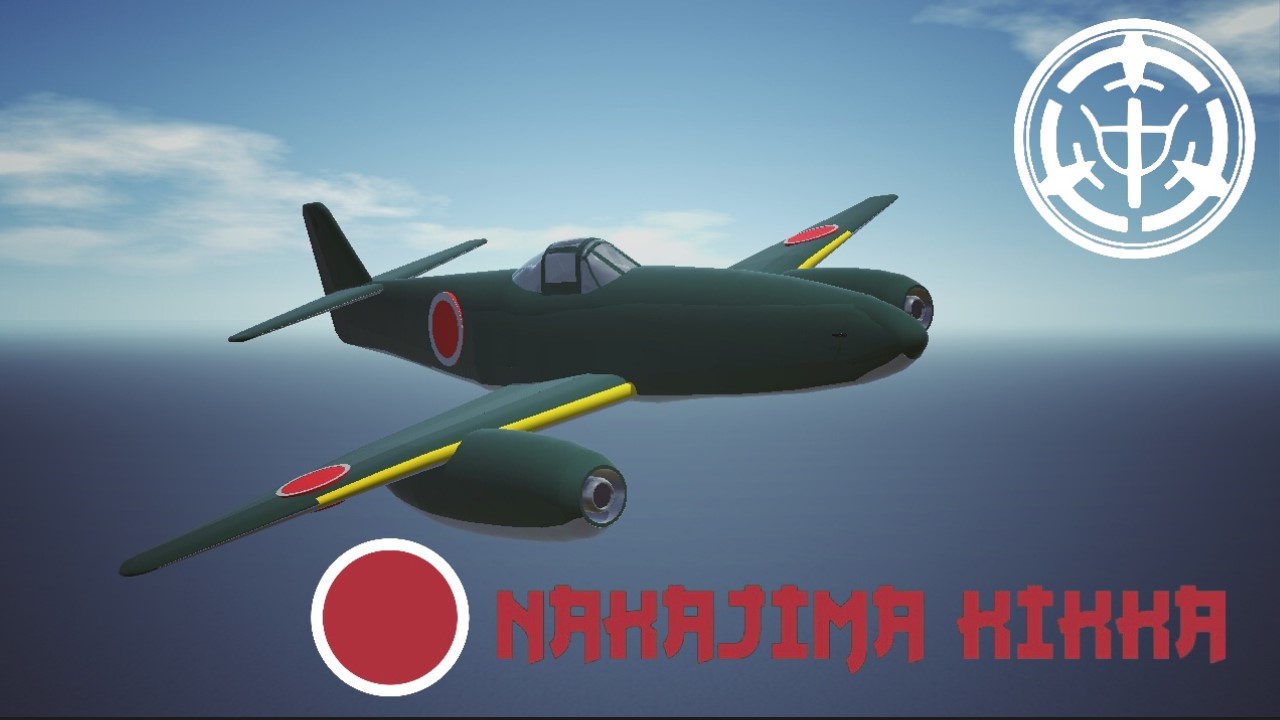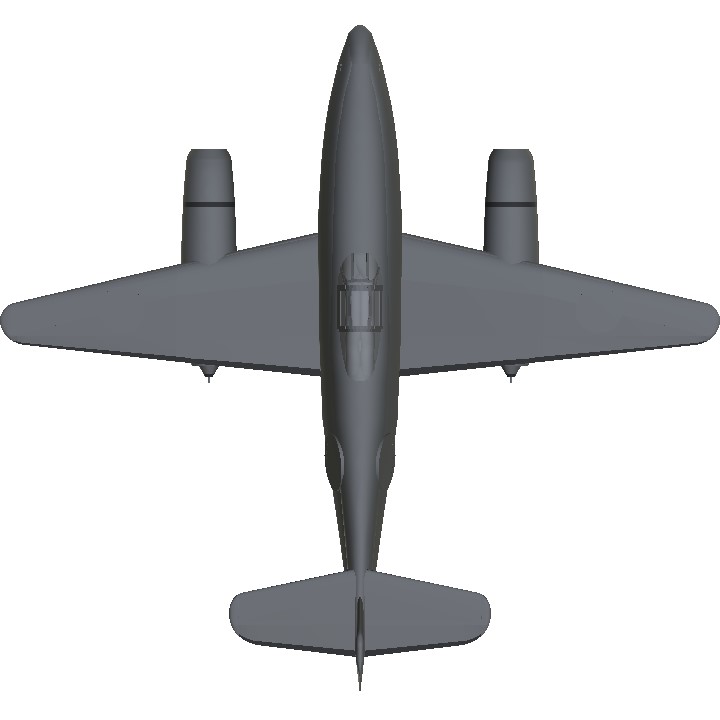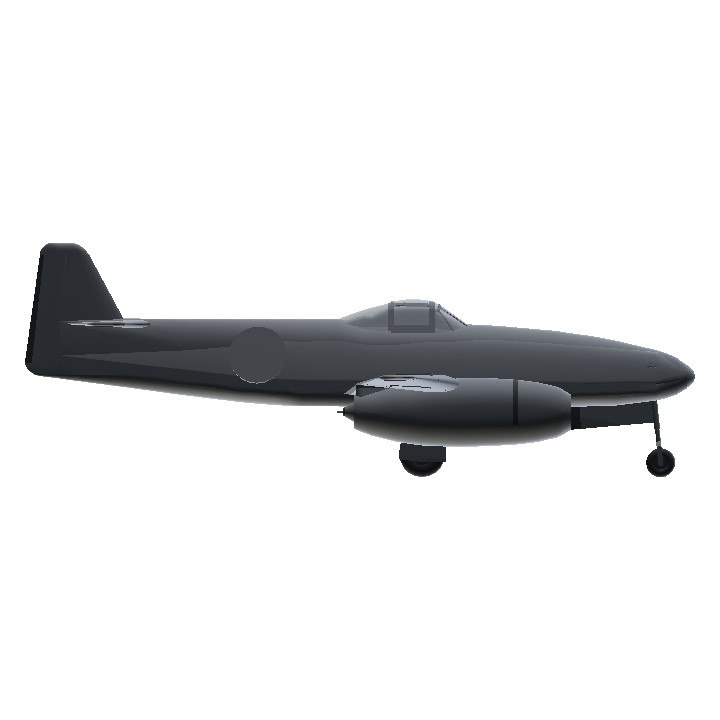The Nakajima Kikka ("Tachibana Orange Blossom") was Japan's first turbojet-powered aircraft. It was developed late in World War II and the first prototype had only flown once before the end of the conflict. It was initially called Kokoku Nigo Heiki. More information
Controls:
Normal control
AG1: Wheel steering
AG2: Folding wings
VTOL: Flaps


Specifications
Spotlights
- Trainzo 4.2 years ago
- ChiChiWerx 4.2 years ago
- Zott 4.2 years ago
- RicardoACE 4.2 years ago
- TatsuTheOtaku 4.2 years ago
General Characteristics
- Created On Android
- Wingspan 40.5ft (12.4m)
- Length 37.7ft (11.5m)
- Height 13.2ft (4.0m)
- Empty Weight 5,378lbs (2,439kg)
- Loaded Weight 8,924lbs (4,047kg)
Performance
- Power/Weight Ratio 0.755
- Wing Loading 33.3lbs/ft2 (162.8kg/m2)
- Wing Area 267.7ft2 (24.9m2)
- Drag Points 621
Parts
- Number of Parts 521
- Control Surfaces 7
- Performance Cost 1,822





Nice one
@Kaytusha123 the Kikka was actually an independent project
@ChiChiWerx Thanks
An excellent, well executed build. The build itself captures the Kikka’s shape accurately, to include the outlines of the flying surfaces, which took some work judging by the number of parts used in that area. The flight model is good, about as good as can be expected while relying on the basic game physics and drag reduction. The wing area, fuel quantity, weights, wing loading and thrust are all accurate, so that results in a build that flies close to the RL jet. Acceleration (like all early jets, slow), takeoff roll, roll rate, pitch and turn rates and general performance at low altitude is close to RL, IMHO. The high altitude speed is too fast, I think because you used indicated airspeeds and not TAS to reflect the RL’s published “speeds”. However, the published RL performance figures are almost always for TAS, not IAS, and the difference in TAS and IAS is large at high altitude. At low altitude/S.L., where the difference in TAS and IAS is small, your build has a close to RL max level TAS, which is good. The fast airspeed at high altitude is also a result of the SP atmosphere model, which results in speeds being too slow at S.L. and too fast at high altitude. The only way I know of around this is to use a FT formula on the engines that decreases thrust as you climb, increases thrust with speed (ram air effect) or uses a speed brake that deploys when the jet’s max speed is reached. Everyone has their preferences, though I would suggest also use your speed brakes to simulate landing gear drag, as extended L.G. creates a lot of drag when extended. You use the concealed air brakes here with “Airbrake”, though the RL jet didn’t have any speed brakes and none are modeled on your build, which is really odd! What results is: Pull back on the throttle and the jet slows drastically…perhaps the biggest miss for your build. Last difference in what you did and what I would suggest is: More trim authority! Trim effectiveness (clean) is lost below 210 KIAS and though extending the flaps restores trim authority, that’s not how trim effectiveness works IRL. Trim is almost always effective to well below stall airspeed, whether clean or “dirty”. But, very nice build, my write up is long, but I wanted to give a complete evaluation because, regardless of any suggestions I make, this is an excellent build that feels realistic, flies nicely and is fun to fly. Keep up the good work!
@Kaytusha123 exactly
its probaley the japanese copy of the me-262
Looks sick!
@Trainzo Thanks
Very nice plane . Great build .